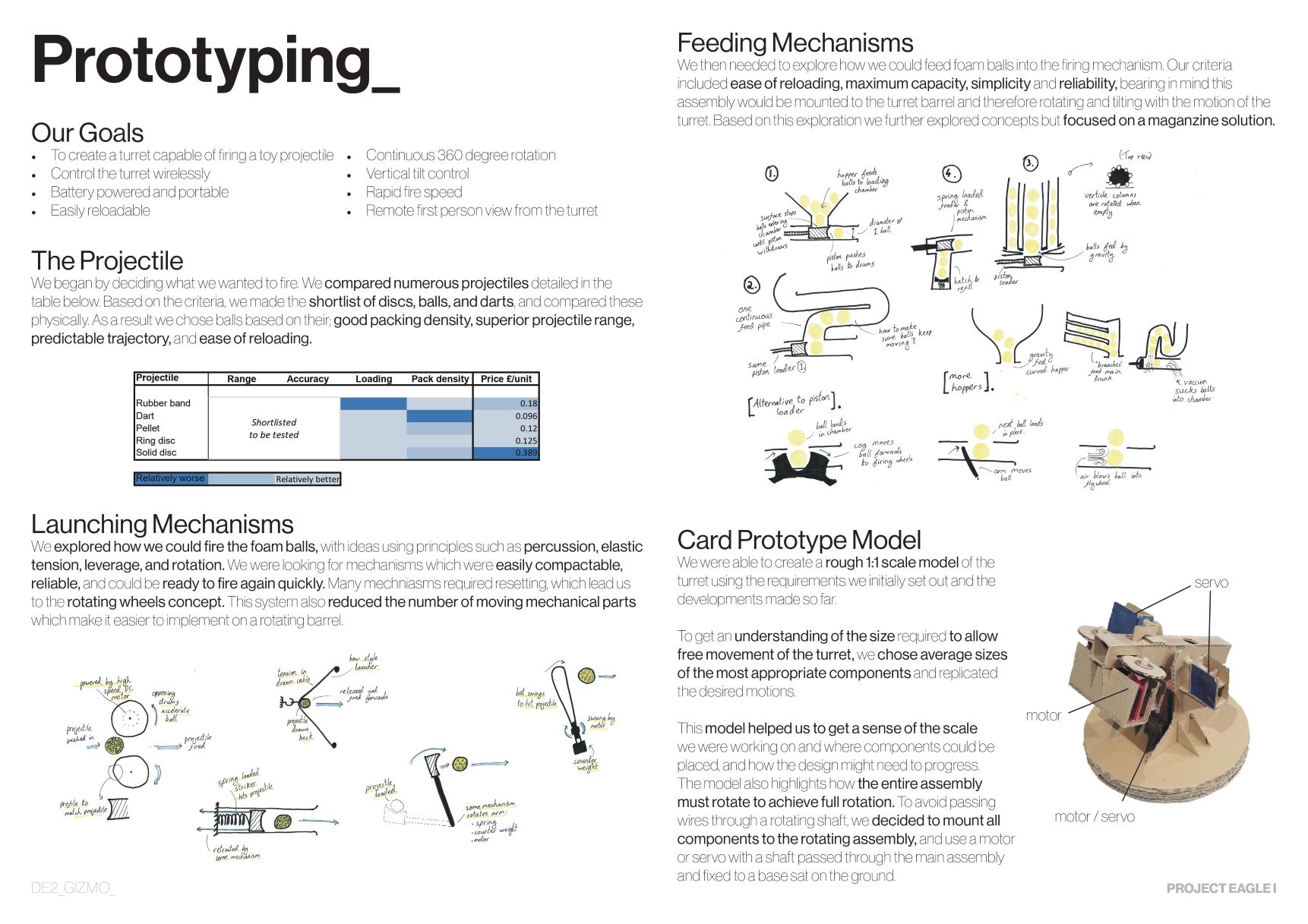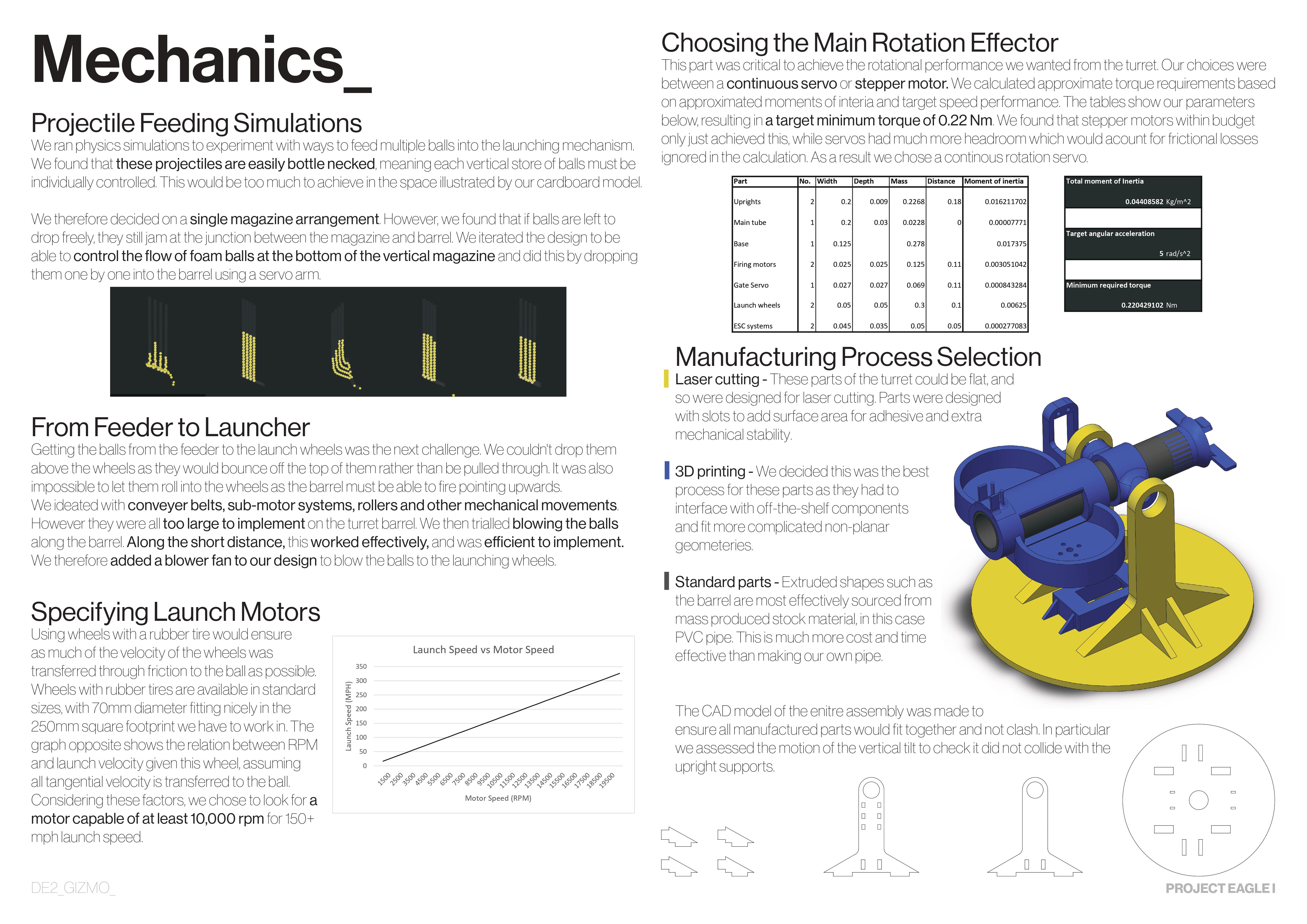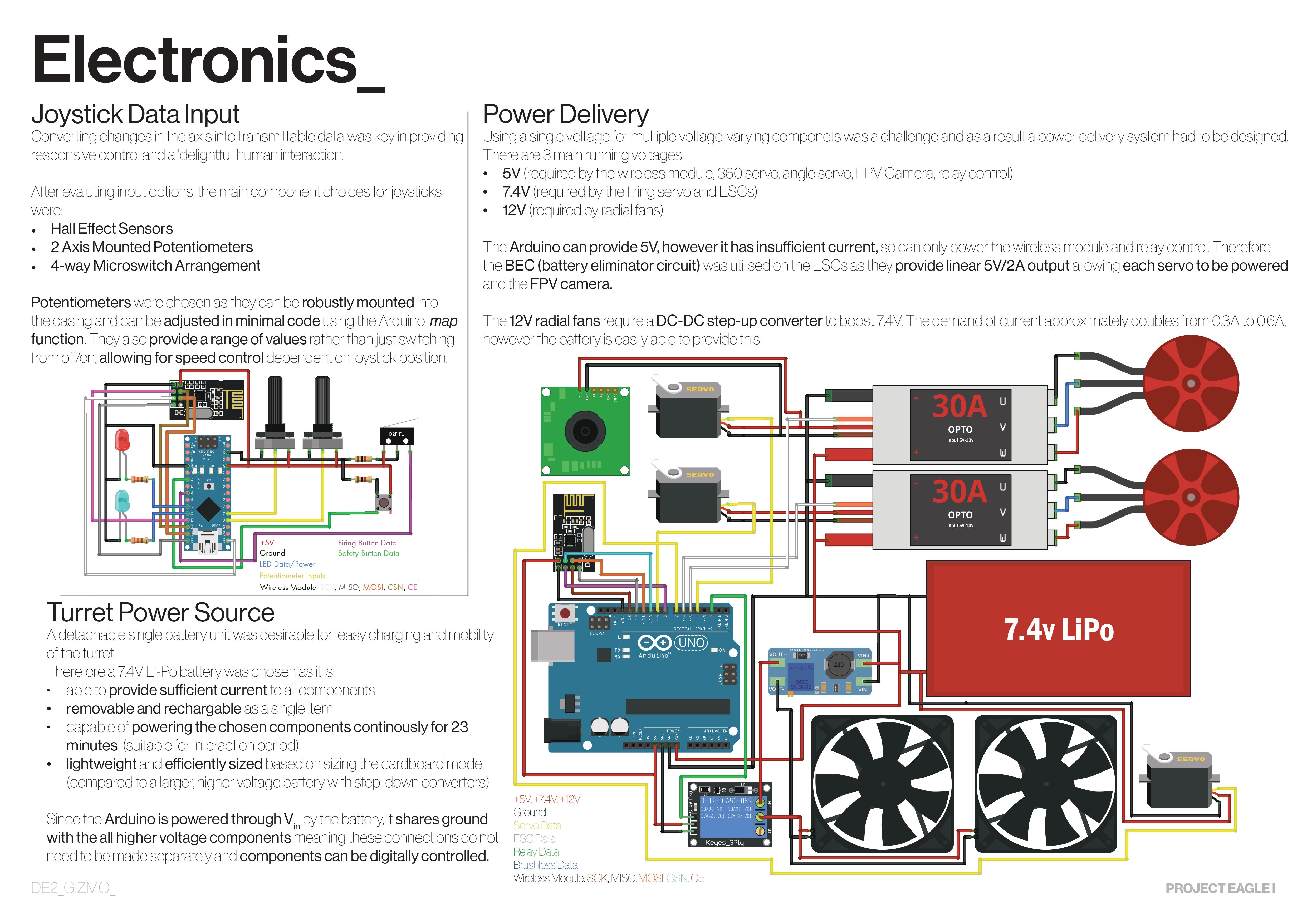EAGLE I: Wireless FPV Sentry Turret
overview
The brief for this project was simple and open – “create a novel mechatronics project with human interaction to spark curiosity.” It had to fit in a volume no bigger than 250 x 250 x 300mm. In a pair, we decided to create a remote controlled sentry turret. We decided to swap our typical project roles to broden our skillsets, where instead of CAD and DFM, I handled the electronics and coding.
the challenge
Enabling the entire turret to operate from a single 7.4V battery was a challenge, as well as creating efficient code so that it could be controlled wirelessly with a joystick. My partner handled the turret CAD for this project, whilst I was focused on the electronics, coding, networking and fabrication. It required continous communication between us to ensure integration was possible given the complexity and 9 week deadline. I also helped ideate mechanisms such as the blower fans, and determined suitable hardware. Major accomplishments for this project is the responsiveness of the code, integration with mechanical design, power delivery systems and 360 degree FPV experience.
the result
The final outcome is an immersive wireless experience that is able to fire foam balls at speeds up to 150mph. You can control the turret from up to 1km away in open air, whilst wearing the headset for a live first-person feed of what the turret sees. The motors are limited to 20% for safety, however even at 100% the design still holds up (the ground does start to vibrate though). I retrofitted a classic Logitech Gaming Joystick with an Arduino Nano, using an nRF24L01 2.4GHz wireless chip to communicate with the Arduino Uno on the turret. Data was sent across in packets, allowing for all electronic components to operatre in real-time with close to no delay. Steps to build the project are on Instructables where it won the Arduino Contest Grand Prize. It has over 36,000 views, showing interest from other makers to create their own – it’s also been featured on Hackaday, Arduino Blog and even caught the attention of Hasbro NERF.
TEAM
Shafae Ali, Oscar Jones
year
2020



